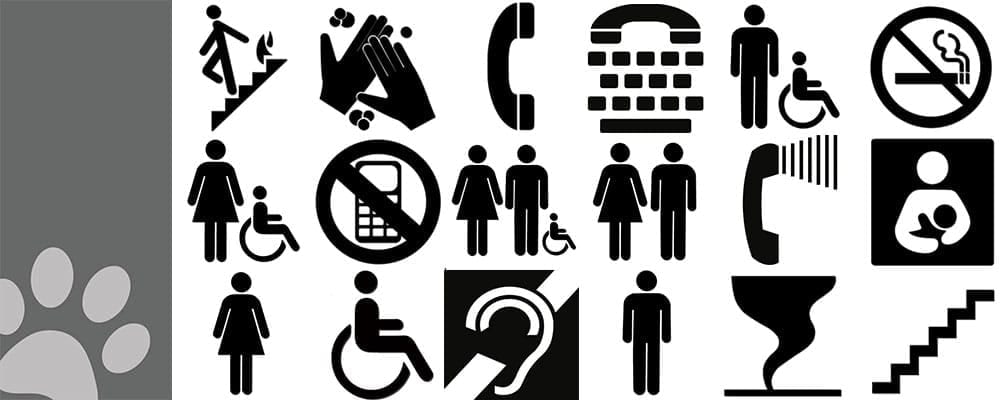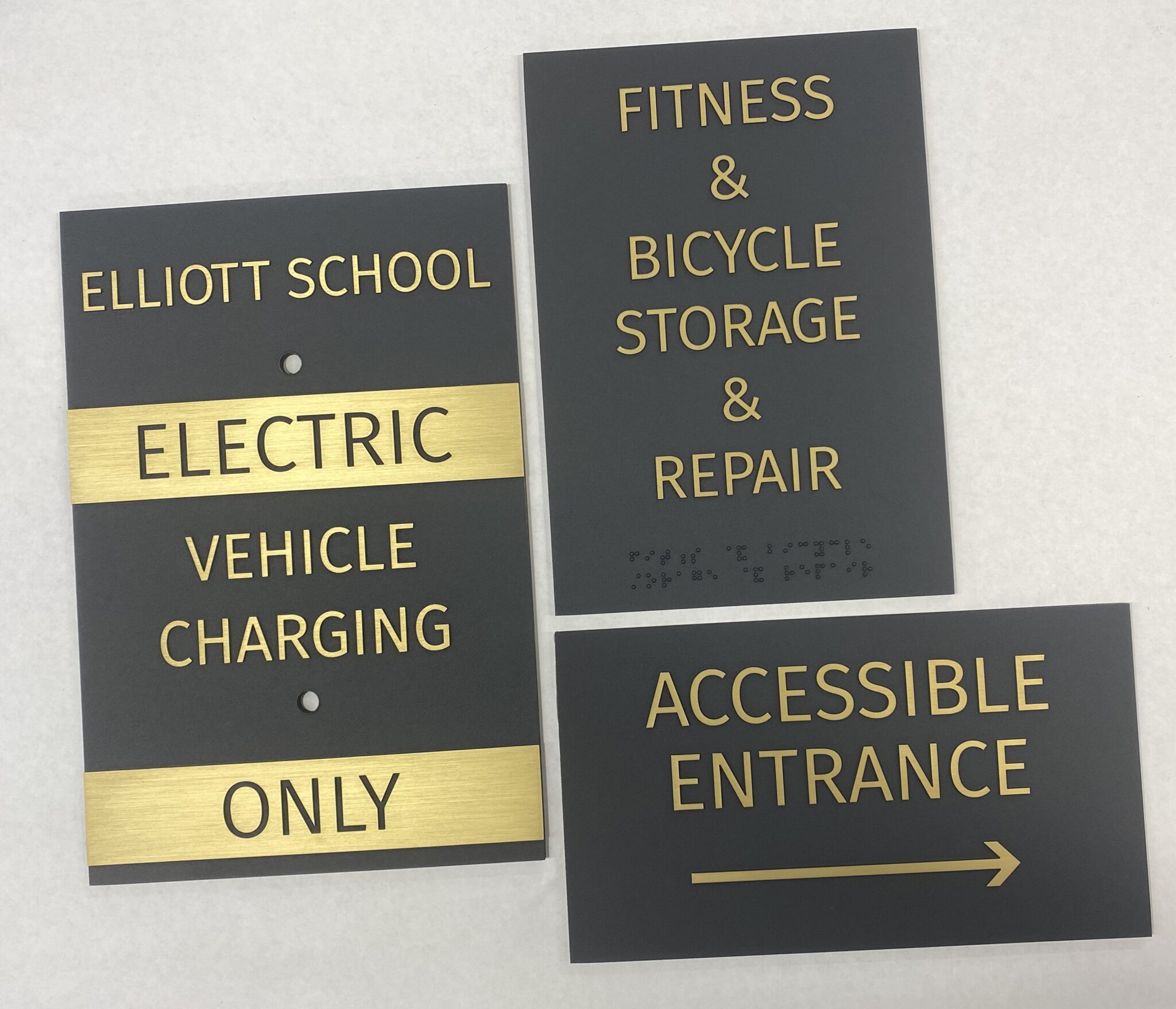Understanding the Rules Behind ADA Signs
Understanding the Rules Behind ADA Signs
Blog Article
ADA Signage: Making Sure Availability and Conformity in Public Spaces
ADA signage plays an important duty in ensuring access and compliance within public rooms, substantially adding to an inclusive atmosphere for people with impairments. By sticking to ADA criteria, signs not just facilitates navigating however also emphasizes a company's commitment to variety and equality. As we discover the nuances of ADA signage, from responsive features to develop details, it's important to consider exactly how these components coalesce to support the legal rights of all customers. What are the typical risks companies encounter in maintaining compliance, and exactly how can future patterns in signage remain to drive availability ahead?
Value of ADA Signs
In contemporary society, the importance of ADA signage extends beyond simple compliance with legal requireds to personify a dedication to inclusivity and availability for all individuals. These signs are vital in producing environments where people with handicaps can browse public rooms with the very same convenience and self-reliance as those without impairments. By offering standard and clear details, ADA signs makes sure that everybody can access facilities, solutions, and info without barriers.
The relevance of ADA signs hinges on its ability to boost the lifestyle for people with disabilities by advertising equivalent gain access to. It gets rid of the obstacles that might or else hinder their ability to get involved completely in neighborhood life. Additionally, these indicators work as visible indications of a company's devotion to diversity and equal rights, reflecting more comprehensive societal worths that promote the legal rights and dignity of all people.
Moreover, ADA signs plays a vital role in public safety and security. By guiding people to exits, restrooms, and various other necessary centers, it makes sure that all individuals, despite physical capacity, can leave securely during emergencies. In recap, ADA signage is not simply a governing requirement yet an effective device for cultivating a comprehensive and equitable culture.
Secret Aspects of Conformity

Placement is important; signs should be mounted in places that are obtainable and easily visible. Typically, signs needs to be mounted in between 48 and 60 inches from the ground to guarantee access for both standing and wheelchair users. Tactile components, such as Braille, are important for people with aesthetic problems, giving essential details in a non-visual layout.
High-contrast colors in between the message and background are needed to enhance readability for individuals with reduced vision. The ADA mandates certain contrast ratios to make sure clarity. Furthermore, personality size is a key consideration, with minimal elevation needs determined by the checking out distance to make sure readability from different angles.
Layout Considerations for Ease Of Access
Creating available signage requires a careful method to guarantee it satisfies the demands of all individuals, specifically those with disabilities. The size of the text is equally essential, with ADA guidelines suggesting a minimum height based on watching distance to guarantee clarity.
Contrasting shades in between message and history are vital for presence, especially for individuals with aesthetic problems. Additionally, responsive components, such as Braille and raised personalities, are important for people that are blind or have low vision.
In addition, the positioning of signs plays a substantial duty in ease of access. Indicators must be installed in locations that are quickly reachable and unobstructed. Ensuring that signs is placed at appropriate elevations and angles allows all individuals, including those using mobility devices, to interact with them effectively.
Usual Blunders to Prevent

Another widespread mistake is the wrong placement of signs. ADA guidelines specify accurate elevation and area needs to make sure that indicators are helpful hints easily visible and reachable by all people, including those using mobility devices. Disregarding these standards not just hampers accessibility but likewise risks non-compliance with lawful criteria.
Furthermore, insufficient contrast in between message and background is a regular oversight. Sufficient comparison is crucial for readability, especially for people with reduced vision. Developers in some cases select colors that are aesthetically appealing however do not have the necessary comparison, providing the text difficult to discern.
Last but not least, some designers fail my link to include tactile aspects, such as Braille, which are critical for people that are blind. Leaving out these features not just causes non-compliance with ADA regulations yet likewise restricts accessibility for a segment of the population that counts on tactile info.
Future Trends in Signs
Advancements in modern technology and enhancing awareness of inclusivity are forming the future patterns in signage design. Digital signage, for instance, is progressing to consist of interactive functions and real-time updates, which can be important in giving vibrant details in public areas.
Another emerging pattern is the use of enhanced fact (AR) to enhance customer experience. AR-enabled signage can overlay electronic information onto the physical setting, giving aesthetically damaged people with auditory or haptic comments. ADA Signs. This modern technology not just enhances ease of access yet likewise develops click for more an interesting experience for all users
Sustainability is additionally a considerable element affecting signs trends. Environment-friendly products and energy-efficient lighting remedies are being focused on to straighten with global environmental objectives. Additionally, improvements in products scientific research are bring about the development of more long lasting and weather-resistant indications.
Final Thought
ADA signs plays a vital duty in assuring ease of access and conformity within public areas by including tactile elements, high-contrast shades, and critical positioning. The adherence to ADA standards not only facilitates secure navigating for individuals with specials needs yet also symbolizes a company's commitment to diversity and inclusivity. By preventing typical mistakes and welcoming future patterns, public spaces can continue to advance these values, making sure that the rights and self-respect of all people are valued and upheld.
ADA signs plays a vital function in ensuring availability and conformity within public rooms, considerably contributing to a comprehensive setting for individuals with disabilities. As we discover the nuances of ADA signs, from tactile functions to make ins and outs, it's important to think about how these elements coalesce to support the civil liberties of all users.In modern society, the importance of ADA signage extends beyond simple compliance with legal mandates to personify a commitment to inclusivity and access for all individuals. By supplying standard and clear information, ADA signage makes certain that every person can access centers, services, and information without obstacles.
ADA signage plays a crucial function in ensuring accessibility and conformity within public rooms by integrating tactile aspects, high-contrast shades, and tactical positioning. (ADA Signs)
Report this page